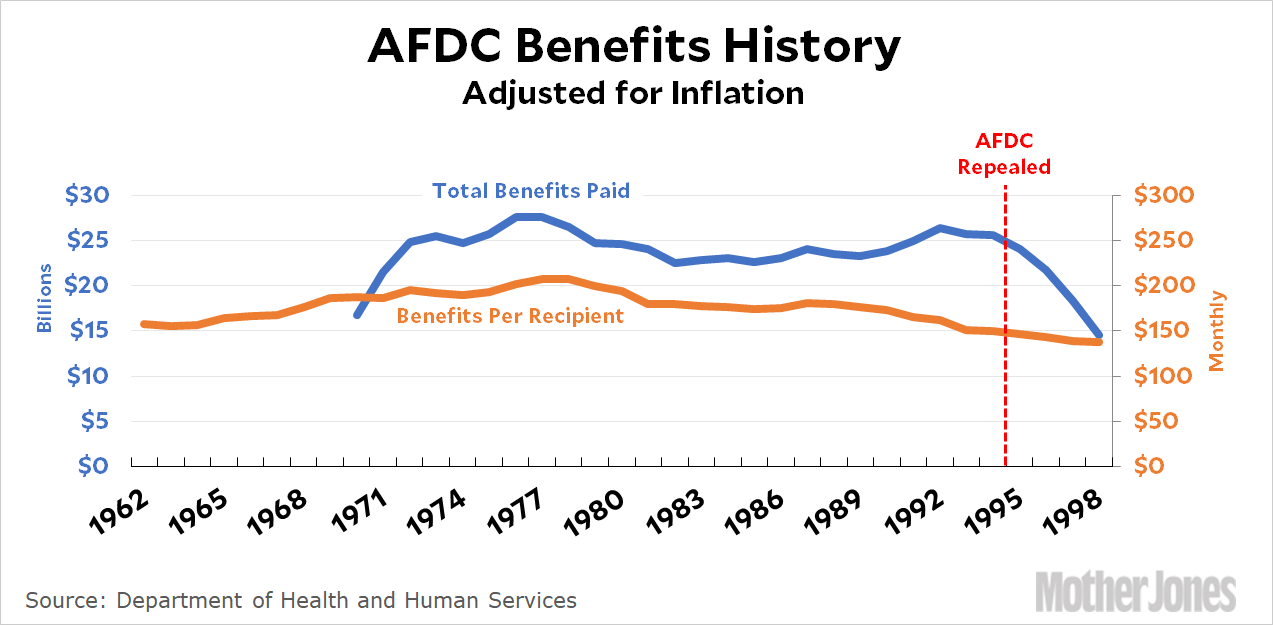I have had the following chart sitting around for months and I just noticed it again today. But what does it mean? Why did I make it? What story was I planning to tell?

AFDC started out as a program for (white) widows. That was no problem: back in the 30s no one expected (white) widows to work so giving them a living allowance was widely supported. In the early 60s it expanded to incude any family where the father didn’t work. People grumbled a little bit. In the late 60s black women were allowed to get AFDC benefits. More grumbling. Then benefit requirements were eased, leading to larger enrollments. Yet more grumbling. And that was about it through the 1990s.
As of 1995 total benefits paid had for years been flat at about $25 billion, and benefits per recipient were actually declining, reaching their lowest level ever in 1994. So why was AFDC killed in favor of TANF? The program wasn’t skyrocketing out of control. There was some evidence that AFDC recipients didn’t look for jobs, but the evidence was kind of thin. Oh, and the AFDC rolls were full of black people, a big change from the 50s and early 60s.
Beyond all that, what point did I have to make? It’s driving me crazy. I’ll FedEx a free lollypop to whoever can guess what I was planning to do with this chart.
















